In an earlier post I commented on the work of Poiesz. Adopting this methodology leads to the following mental exercise.
According to Poiesz, an individual has intrinsic and extrinsic Motivation, Abbitity and Opportunity that defines behavior. These elements have to be taken into account of one another. Together they mark a behavioral factor: M*O*A = behavioral score.
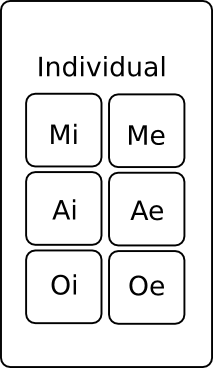
The Intrinsic and Extrinsic Motivation (Mi, Me) together define the overall Motivation. However, there is the possibility that when the internal motivation is firm, it can over rule the external motivation (‘social pressure’, page 65, Gedragsmanagement, Poiesz 1999). Vice versa is assumable as well (frustration). The impact of M is as follows.
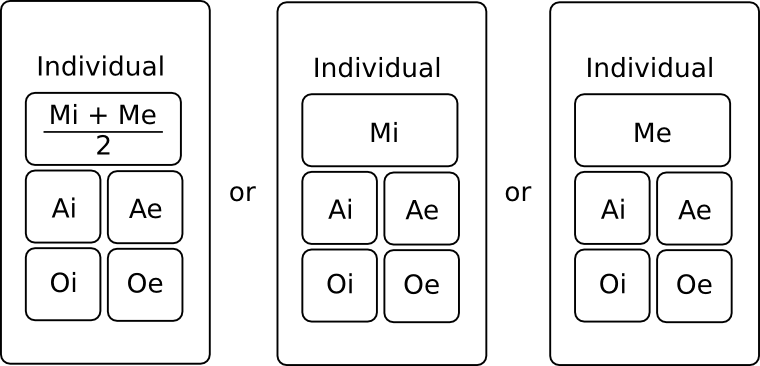
Let us assume the individual working in a team with a manager within an organisation.
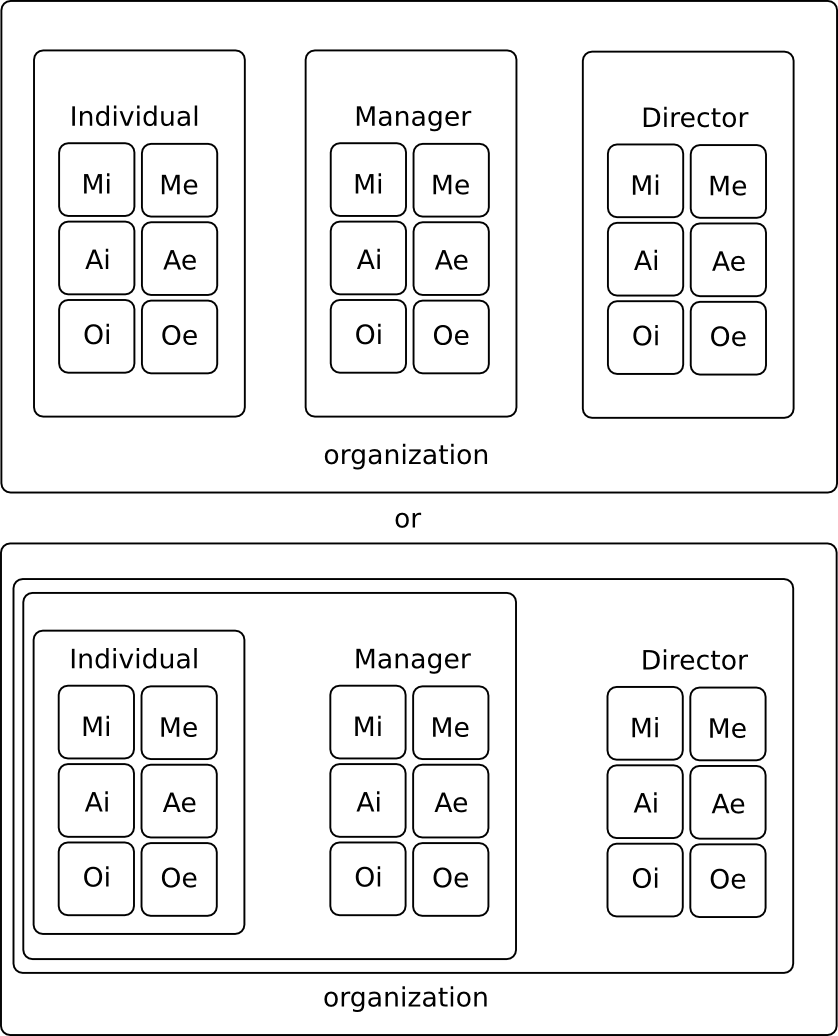
Let us now propose that the internal factors (Mi*Ai*Oi) are more or less stable and that the external factors are influenced by the persons up the hierarchical ladder. For instance the manager offers a personal appreciation (Ind +Me), a training budget (Ind +Ae) and agrees with the individuals personal development plan (Ind +Oe). In parallel, the director delivers a motivational management speech (Man +Me), additional secretarial support (Man +Ae) and plans for market diversification (Man +Oe).
Of course, external conditions influence all persons as well (check DESTEP: i.e. competitors, market developments, pension, bonus system, tax rules, climate change, transport).
Zooming in on the individual and the manager, we see an interaction. The individual’s total behavior has an impact on the extrinsic behavior of the manager and likewise the manager’s total behavior has an impact on the extrinsic behavior of the individual:
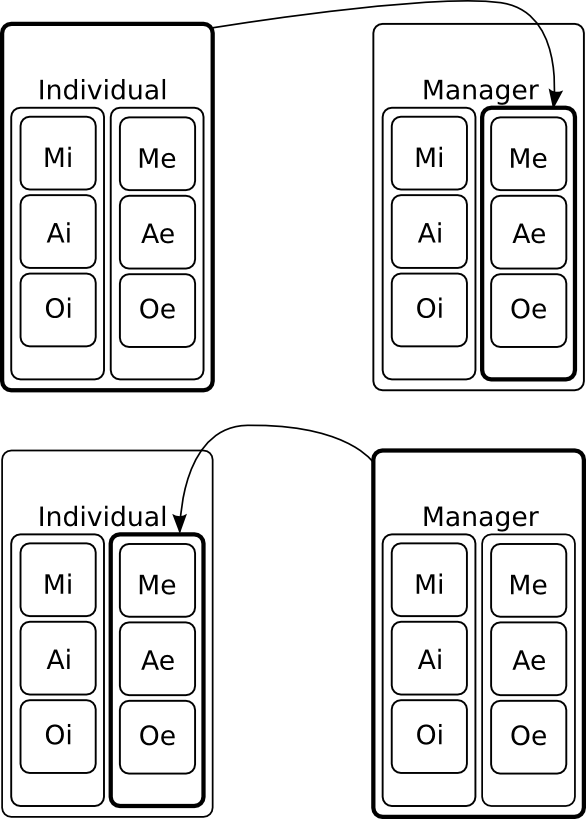
The same goes for the behavioral impact between manager and director. Accordingly, the same goes for individuals that represent organisations within an alliance. See an example of 5 partnering organizations, with individual representatives (only 2 interactions drawn):
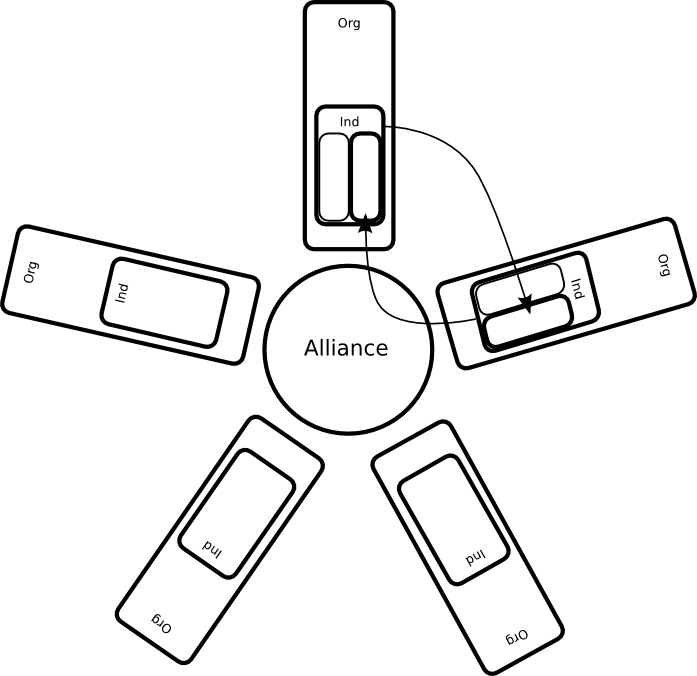
This exercise suggests that a persons behavior impacts the extrinsic motivation (Me, Ae, Oe) of both collegues and partners. There is a chain (or actually an interwoven network) of feedback loops of the wholes of the behavior onto parts of the behavior.
For now we see:
- factorization of individual behavior : M * A * O = F
- interference of individual motivation: M = (Me+Mi)/2 || M = Me || M = Mi
- influence from total behavior of person A onto the extrinsic behavior of person B: [M,A,O]e of B *= [M,A,O]total of A
- All (n = 1 to i) extrinsic Opportunities are subject to external Contextual factors, each with a unique Impact (j): Oe(i) *= Cf(j)
Note about factorization: this concerns driving new behavior or qualitative steering of existing behavior
Note about influence: the same goes for B ont A, and for all other individuals
A similar exercise using the Aizen model (or Leary’s Rose) would offer interesting material for comparization. Besides real world measurements and data assimilation.